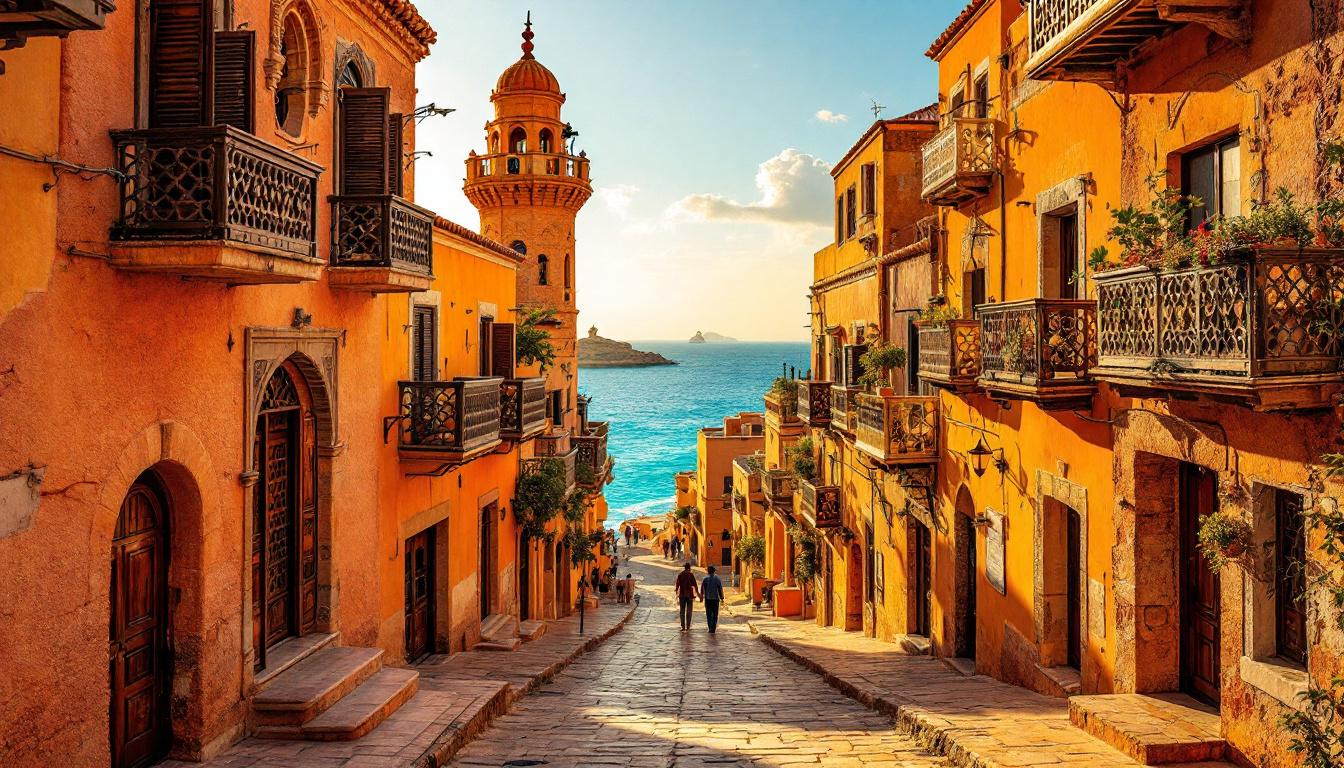My Ethiopian Airlines layover stretched into something unexpected when a fellow passenger mentioned Massawa. “It’s the Pearl of the Red Sea,” she whispered, “but locals worry tourists will ruin what war couldn’t destroy.” That conversation changed my entire East Africa journey.
Three days later, I stood on coral stone streets that seemed frozen in time. This wasn’t another crowded Red Sea resort—this was Africa’s most authentic coastal secret, where Ottoman minarets cast shadows over Italian balconies.
I discovered why Eritreans guard this place so carefully. Massawa holds stories that mass tourism would suffocate, and beauty that deserves protection more than promotion.
The accidental discovery that changed everything
How a simple layover became a revelation
My original plan involved beach time in Zanzibar, but mechanical delays in Addis Ababa opened an unexpected door. The woman beside me spoke of a Red Sea port where coral stone architecture tells stories spanning five centuries. “Take the mountain road from Asmara,” she said. “You’ll understand why we call it our pearl.”
First glimpses of architectural magic
The descent from highland Asmara reveals Massawa like a mirage. Coral limestone buildings glow against azure waters, their Ottoman and Italian influences creating architectural poetry. These aren’t reconstructed tourist attractions—they’re living history where families still hang laundry from ornate wooden mashrabiyas.
What I found that guidebooks never mention
Coral stone secrets from the Dahlak Archipelago
The buildings themselves tell Massawa’s story through their materials. Turkish period structures use rough coral from nearby reefs, while Egyptian colonial buildings feature precisely cut coral blocks. Each stone traveled from the Dahlak Archipelago, creating architecture found nowhere else along Africa’s Red Sea coast.
The haunting beauty of respectful decay
War scars remain visible, but they add gravitas rather than sadness. The Governor’s Palace, once hosting Emperor Haile Selassie, stands partially restored with dignity intact. Local families point out details with pride, not seeking tips but sharing heritage. This isn’t poverty tourism—it’s cultural preservation in action.
The transformation that surprised me most
From fearful outsider to cultural student
My first morning, I approached respectfully but awkwardly, camera hidden and voice soft. By afternoon, elderly men were teaching me Arabic greetings while children practiced English phrases. The transformation wasn’t mine alone—Massawa transforms visitors from tourists into temporary community members.
Understanding protective love over promotional pride
Conversations revealed why locals treasure anonymity over fame. They’ve witnessed tourism destroy coastal cultures elsewhere in the Red Sea. Massawa’s authenticity survives precisely because it remains difficult to reach and impossible to commodify. This protective instinct creates deeper travel experiences than any resort could manufacture.
Why I’ll never travel the same way again
The Dahlak Archipelago gateway experience
Local fishermen offered Dahlak Archipelago excursions at dawn, revealing marine ecosystems untouched by diving tourism. Crystal waters hide coral gardens where traditional boats still use techniques unchanged for generations. The $30 full-day trip included fresh fish prepared on pristine beaches—luxury that money couldn’t buy elsewhere.
Redefining authentic cultural exchange
Evening conversations in the old town’s narrow alleys taught me more about Horn of Africa culture than any museum. Families shared traditional coffee ceremonies, explaining how Massawa’s strategic location shaped centuries of trade connections. These weren’t performed experiences—they were genuine hospitality extended to respectful visitors.
Planning your own respectful discovery
When should you visit Massawa?
November through February offers cooler temperatures perfect for exploring coral stone architecture. August brings intense heat but fewer visitors, creating more intimate cultural experiences. Always check current visa requirements for Eritrea—they change frequently.
How much does authentic cost?
Daily expenses average $40-60 including accommodation, meals, and local transport. The Imperial Palace area offers simple guesthouses run by families who speak multiple languages. Boat trips to Dahlak cost $25-35 per person with shared expenses.
What should responsible visitors know?
Photography requires permission, especially near religious sites like the ancient Mosque of the Companions. Dress modestly, learn basic Arabic greetings, and always ask before entering private courtyards. Locals appreciate visitors who understand they’re guests in someone’s living heritage.
Massawa revealed that authentic travel means earning access through respect rather than purchasing it through wealth. This Pearl of the Red Sea remains precious because it chooses its visitors carefully, creating transformative experiences impossible in commodified destinations.
